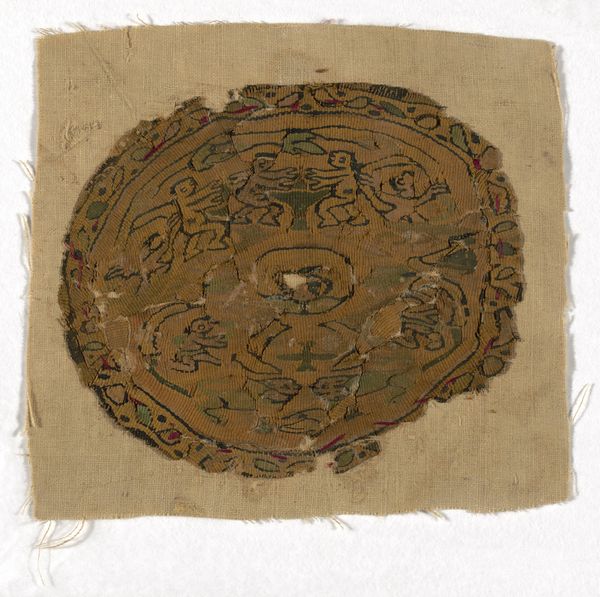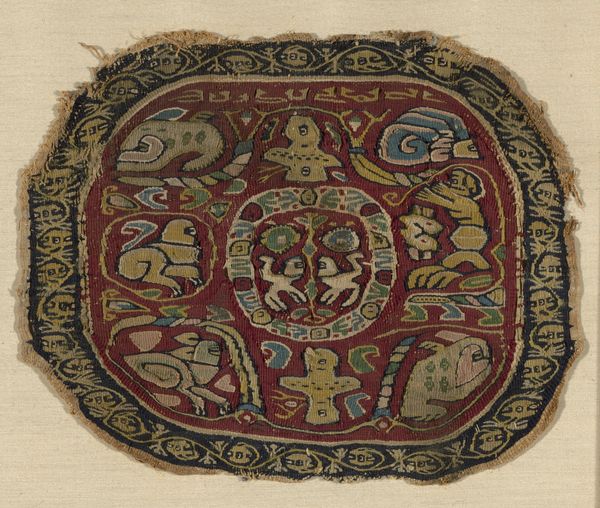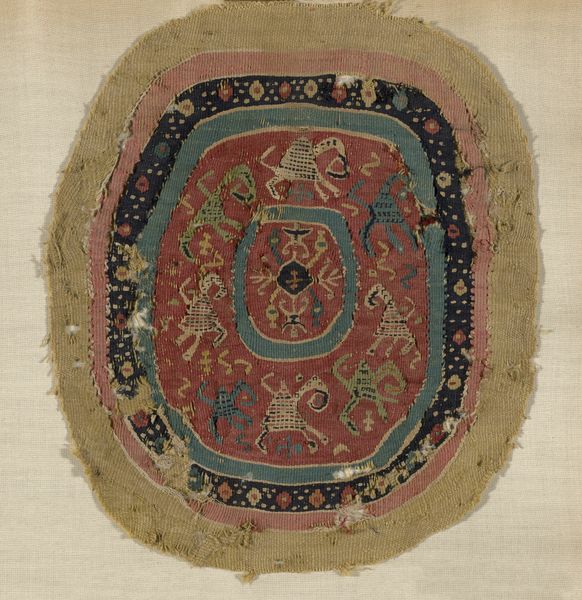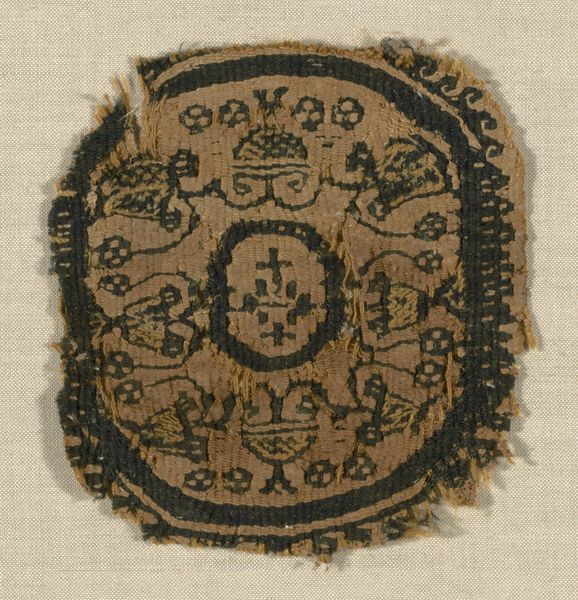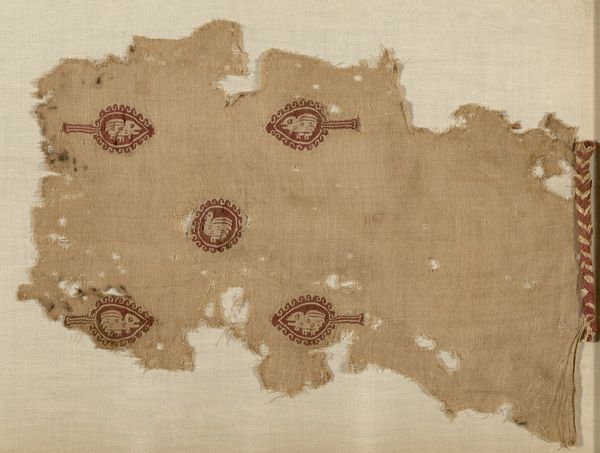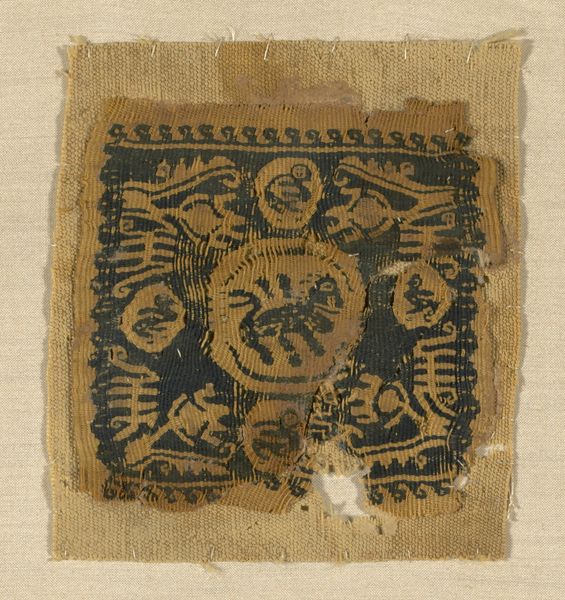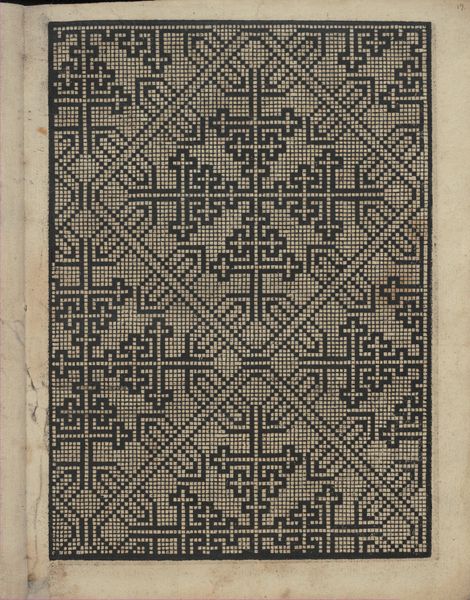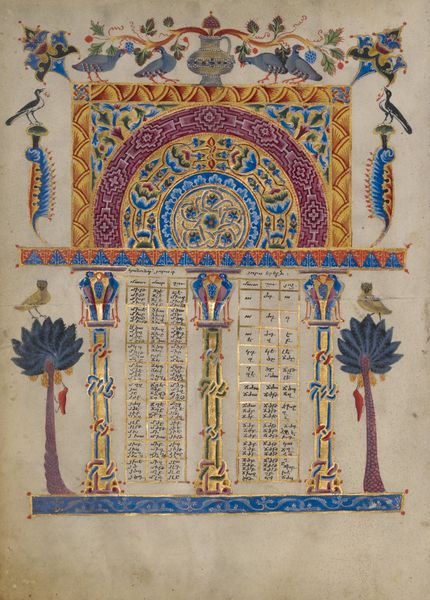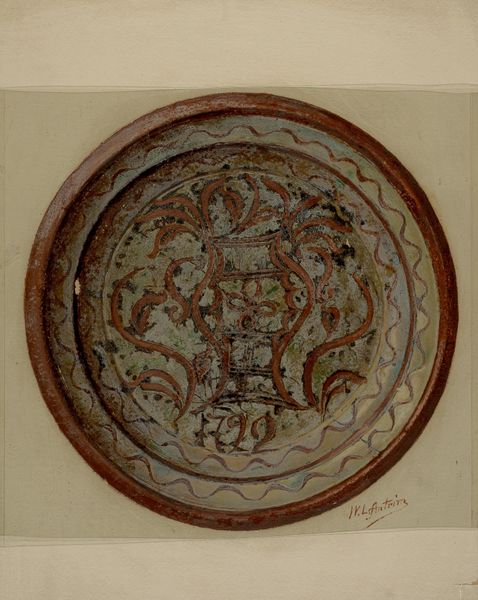
mosaic, weaving, textile
#
mosaic
#
weaving
#
textile
#
ancient-egyptian-art
#
egypt
#
geometric
#
ancient-mediterranean
#
islamic-art
#
decorative-art
Dimensions: 21.2 × 20.5 cm (8 1/4 × 8 in.)
Copyright: Public Domain
Curator: Before us, we have a textile work entitled "Roundel," a Coptic piece likely dating from the 3rd to 5th century during the Roman period in Egypt. It now resides here at the Art Institute of Chicago. Editor: Immediately, the geometric intensity catches my eye. There's an undeniable gravity to the piece, yet also a fragmented and incomplete feeling. Is it me, or is it like looking at an echo of a story? Curator: The patterns are incredibly dense. Observe how the weaver utilizes interlocked geometric shapes like squares and circles. Considering its age, it speaks to me of an incredible symbolic memory, carrying with it all the ancestral ingenuity from Ancient Egyptian period. Editor: Right, that makes me think about the cultural mixing that was happening in Egypt at this time. This roundel isn’t purely one culture; you have Coptic traditions, the continuation of ancient Egyptian motifs, overlaid onto Roman artistic conventions. It's syncretic and very hybrid. I'm thinking of religious and gender dynamics that all played their parts in daily lives then. How might they appear here, hidden inside the warp and the weft? Curator: The circular shape itself is worth noting. It represents wholeness and eternity—very powerful ideas resonating through ancient traditions across many cultures. When viewed alongside all of these recurring square and octagonal forms, they conjure an order, that attempts to grasp the cosmos. It almost possesses you, doesn’t it? Editor: Absolutely. Its scale makes me think it must have been part of something larger, like a hanging or perhaps clothing? Think about how the maker’s labor intersects with ancient cultural codes, how the very act of its creation ties her to her community, its visual language reflecting and influencing social constructs of gender. Curator: Its function offers another layer. During the Roman period, textiles, with motifs laden with symbolic import, held prominence. Such pieces would signify prestige, rank, identity, spiritual convictions. This humble Roundel tells us more. Editor: Indeed. As an object, it bears traces of people’s everyday realities – the mundane and sublime stitched together. To contemplate a single piece of textile becoming an enduring narrative, and still remaining for our gaze today. This gives rise to thoughts about the legacies we are building today. What symbols and signs will resonate across centuries to come? Curator: Contemplating that is something truly awesome. I now consider the piece differently, enriched with all we spoke about.
Comments
No comments
Be the first to comment and join the conversation on the ultimate creative platform.
